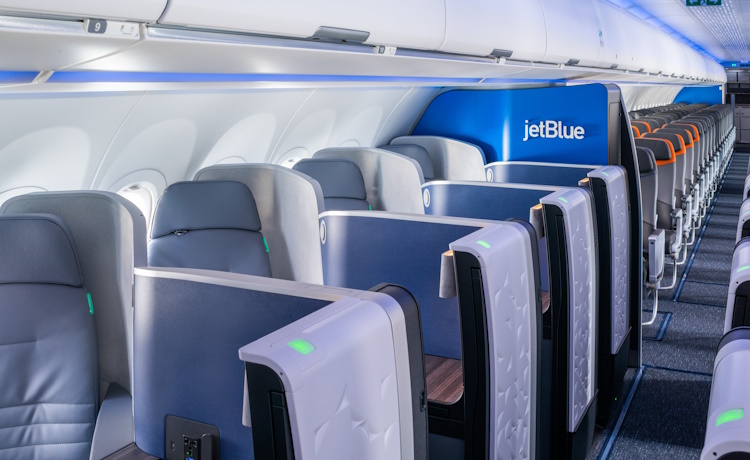JetBlue has announced it will become the first airline to adopt Amazon’s Project Kuiper, the tech giant’s new low Earth orbit (LEO) satellite broadband service, in a move set to significantly boost the speed and reliability of its inflight Wi-Fi.
The airline, which introduced its free high-speed Fly-Fi service in 2013, said it will begin installing Project Kuiper’s technology on part of its fleet starting in 2027. The upgrade is positioned as the next phase in JetBlue’s JetForward strategy, which focuses on enhancing the passenger experience with better products and connectivity from gate to gate—without added cost to travelers.
“Our agreement with Project Kuiper marks an exciting leap forward for us as the hands-down leader in onboard connectivity,” said JetBlue president Marty St. George. “Whether it’s binge-watching a favorite show, staying connected with loved ones, or wrapping up a work project, we’re always looking for ways to make our customers’ time in the air as connected and productive as they want it to be.”
Project Kuiper is building a global broadband network powered by thousands of satellites in LEO, linked by high-speed optical inter-satellite connections and supported by ground infrastructure. Amazon has already deployed more than 100 satellites and is accelerating launches ahead of its commercial service debut.
“Staying connected is part of everyday life, even when you’re traveling,” said Panos Panay, senior vice president of Amazon Devices & Services. “With Project Kuiper, we’re working to ensure customers can enjoy fast, reliable internet wherever they are—at home or 35,000 feet in the air—and we’re pumped to bring that to life with JetBlue.”
JetBlue, currently the only major U.S. carrier offering free high-speed Wi-Fi on every aircraft using geostationary satellite technology, said the Kuiper rollout could pave the way for a multi-orbit solution in the future, combining GEO and LEO networks for even stronger performance.
Further details on installation timelines, aircraft types, and routes are expected as the 2027 rollout approaches.

